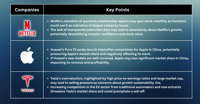Jesse Livermore, one of the greatest traders in the 20 century, has left us with trading quotes that continue to stand up to these days.
At the age of 15, he traveled to Boston and began working in Paine Webber’s Boston brokerage office. His job was to post the stock and commodities prices on the brokerage’s price quotations chalk board. He studied the price movements and began to trade on their price fluctuations.
No one has ever made more money in the markets or came back stronger from more bankruptcies than Livermore. He successfully shorted both of 1907 and Great Depression crashes for some of the biggest trading wins in history. It is said that the 1929 stock market crash was the pinnacle of his career, when he shorted stocks and made more than $100 million.
Lesson 1
“Do not anticipate and move without market confirmation – being a little late in your trade is your insurance that you are right or wrong.”
You have to wait for the price action of the market to confirm your prognosis. But, some traders are impatient and greedy.
If you think the market will rally, then wait for it to go up a little, and then you can get in. If you think the market will fall, similarly wait for a signal first. Being a little late will cost you a few extra points but that isn’t much of a loss if you’re able to capture the much larger trend. It will prevent you from trading in too many choppy, whipsawing markets.
While others are impatient and fearful.
They see that the market is inching up to a breakout point and they convince themselves that the market is so strong that it will break through with ease. They then think that it would be a good idea to buy just before the breakout. That way they’re going to get into the trend a couple of points early and that will save them money.
More often than not, the market will inch right up to the breakout point and then it will fall back. It’s this resistance that results in a channel in the first place. It’s waiting for the price action to confirm the trade that will lead to the biggest trends and profits.
Lesson 2
“It is foolhardy to make a second trade, if your first trade shows you a loss. Never average losses. Let that thought be written forever upon your mind.”
Averaging losses simply means adding to a losing trade.
Unsuccessful traders seek to recover from losses by buying more, while hoping that the price won’t rise as much for them to reach a break even point. That’s a way to compound losses.
Lesson 3
“It takes a man a long time to learn all the lessons of all his mistakes.”
It takes a lot of learning to become a successful trader – be it theoretical learning or learning by making mistakes. But mistakes cost money. There is, however, another way. You can use free demo accounts where traders can test their strategies using virtual money.
After one successful trade , it will become easier to make real money. Let’s say you make 10% on $1,000. That’s $100 profit. However, once you’re successful in growing your account and make 10% on $10,000, this equates to 10 times more money in profits even though in both cases 10% was made.
Lesson 4
“If you can’t sleep at night because of your stock market position, then you have gone too far.”
This happens with traders who always over-leverage. Trading is not a quick scheme to get rich overnight. There is an old trader’s adage to always “sell to the sleeping point,” and the same logic applies to all traders.
Lesson 5
“The desire for constant action irrespective of underlying conditions is responsible for many losses on Wall Street even among the professionals, who feel that they must take home some money every day, as though they were working for regular wages.”
Impatience leads many traders to lose money. Don’t trade until there’s a proper opportunity and where the risk you’re taking is smaller than the potential profit. You’ll need to have trading rules and strategies to follow in order to avoid the trap of over-trading. You’ll also need to learn how to manage your account, so you never risk too much.
Louis Teo
Market Strategist














